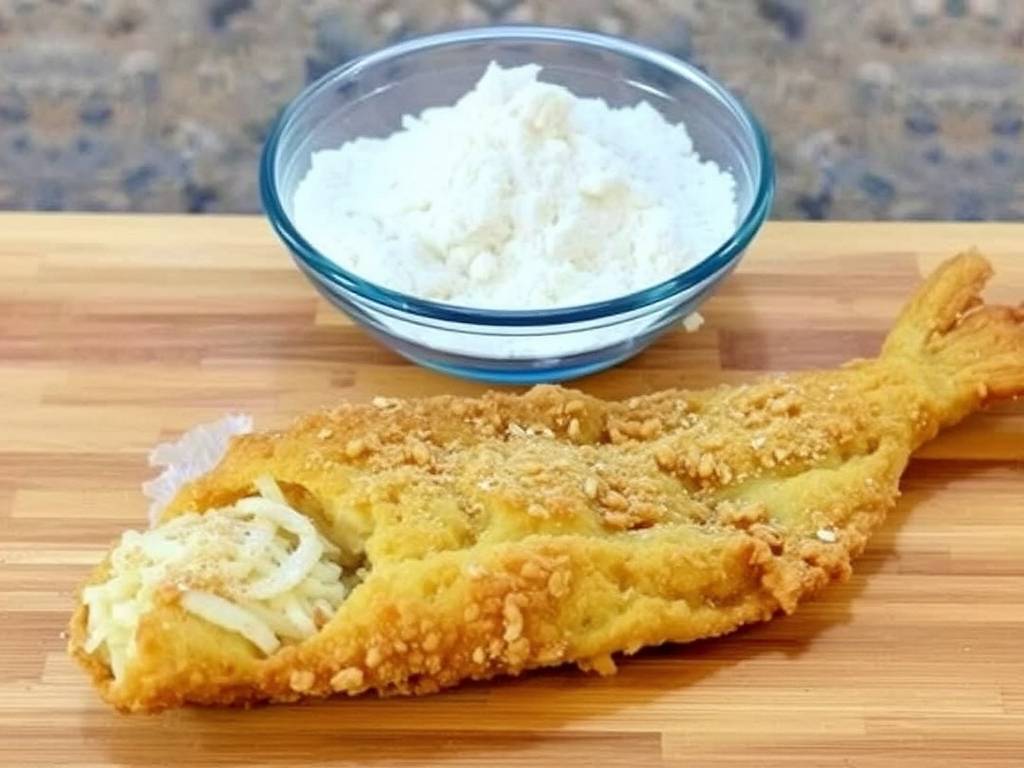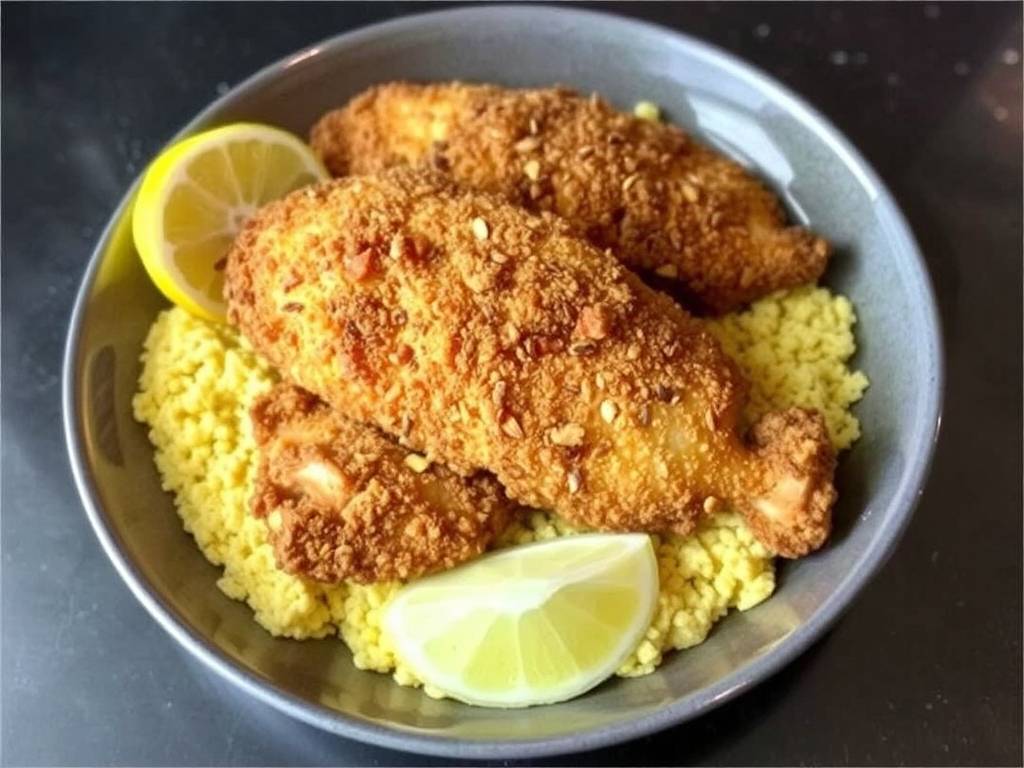Crispy Perfection: A Comprehensive Guide to Making Fried Fish with Cornmeal and Flour

There is a unique, soul-satisfying magic to a perfectly fried piece of fish. The audible, shattering crackle as you break through the crust gives way to the tender, flaky, and steaming white flesh within. While many cuisines have their own celebrated versions, from British fish and chips to Southern American catfish fries, the combination of cornmeal and flour creates a crust that is in a league of its own. This blend offers the best of both worlds: the gritty, hearty crunch of cornmeal and the light, golden-brown crispness of flour. Mastering this dish is not just about following a recipe; it's about understanding the science and art of frying. This guide will walk you through every step, from selecting your fish to the final, glorious drain, ensuring you achieve crispy perfection every time.
The Foundation: Selecting Your Fish

The journey to exceptional fried fish begins at the market. The choice of fish is paramount, as it will determine the texture and flavor of your final dish. You want a firm, white-fleshed fish with a mild flavor that can stand up to the robust coating and the high heat of frying.
- Excellent Choices: Cod, haddock, catfish, tilapia, pollock, and halibut are all stellar candidates. Cod and haddock are the classics, offering large, meaty flakes. Catfish has a slightly stronger, earthier flavor that pairs beautifully with the cornmeal. Tilapia is a more economical and readily available option, though its thinner fillets require careful timing to avoid overcooking.
- Form Factor: You can use either fillets or whole fish that have been scaled and gutted. Fillets are easier for beginners, as they cook quickly and evenly. If using a whole fish, score the skin in a few places to allow heat to penetrate evenly.
- Freshness is Key: Look for fish that smells fresh and clean, like the ocean, not "fishy." The flesh should be firm to the touch and spring back when pressed. If using frozen fish, ensure it is fully thawed in the refrigerator overnight. Pat it thoroughly dry with paper towels; this is a non-negotiable step for a crisp crust.
The Supporting Cast: Ingredients and Equipment
Before you begin, assemble your mise en place—a French culinary term meaning "everything in its place." This preparation is crucial for a smooth, stress-free frying process.
-
For the Fish:
- 1.5 to 2 pounds of firm white fish fillets, cut into 4-6 ounce portions
- 1 cup buttermilk (or 1 cup milk mixed with 1 tablespoon lemon juice or vinegar)
- 1 teaspoon hot sauce (optional, but recommended)
- Salt and freshly ground black pepper
-
For the Coating:
- 1/2 cup all-purpose flour
- 1/2 cup fine or medium-ground cornmeal
- 1 teaspoon garlic powder
- 1 teaspoon onion powder
- 1 teaspoon paprika (for color and a subtle smokiness)
- 1/2 teaspoon cayenne pepper (adjust to your heat preference)
- 1 teaspoon salt
- 1/2 teaspoon freshly ground black pepper
-
For Frying:
- 2-3 cups of neutral oil with a high smoke point (canola, vegetable, peanut, or sunflower oil are ideal)
-
Essential Equipment:
- A large, heavy-bottomed pot or Dutch oven (this maintains a stable temperature)
- Deep-fry thermometer (this is your most important tool for success)
- Wire cooling rack set over a baking sheet
- Tongs or a spider strainer
- Several shallow dishes for the coating station
The Science of the Crust: Why Cornmeal and Flour?
Understanding the role of each component in your coating will elevate your technique from mere following to true cooking.
- Flour: All-purpose flour is the base. When mixed with water or the liquid from the fish, its starches and proteins create a sticky paste that helps the coating adhere. When fried, it undergoes the Maillard reaction—a complex chemical process between amino acids and reducing sugars that gives browned food its distinctive, savory flavor and appealing color.
- Cornmeal: Cornmeal introduces texture. Its larger, grittier particles create tiny pockets and a more rugged surface area, which leads to an incredibly crunchy, craggy crust. It also adds a subtle, sweet corn flavor that complements the fish beautifully. Using a fine or medium grind is best; a coarse grind can fall off too easily.
- The Dredging Station: The classic three-step process—dry, wet, dry—is designed for maximum adhesion. The initial light dusting of flour (often done before the wet dip) seals the surface of the fish, creating a dry layer for the wet buttermilk to grip. The buttermilk, being acidic and thick, clings to this floured surface. Finally, the cornmeal-flour mixture locks onto the buttermilk, creating a perfect shell ready for frying.
The Step-by-Step Process to Crispy Nirvana
Step 1: The Buttermilk Bath (The Flavor Infuser) In a shallow dish, season the fish fillets generously with salt and pepper on both sides. Combine the buttermilk and hot sauce in a separate bowl. Submerge the seasoned fish in the buttermilk mixture, ensuring each piece is fully coated. Let it marinate for at least 15 minutes, or up to an hour in the refrigerator. This step does three things: the acidity of the buttermilk gently tenderizes the fish, the thickness helps the coating stick, and it imparts a subtle tangy flavor.
Step 2: The Coating Concoction (The Crust Creator) In another shallow dish, whisk together the flour, cornmeal, garlic powder, onion powder, paprika, cayenne, salt, and pepper. Ensure the spices are evenly distributed throughout the dry mixture. This is where you can get creative—add dried herbs like thyme or oregano, or a bit of lemon zest for a bright note.
Step 3: The Dredging Dance (The Adhesion Protocol) Remove one piece of fish from the buttermilk, allowing the excess to drip off. Dredge it thoroughly in the cornmeal-flour mixture, pressing gently to ensure a solid, even coating on all sides. Place the coated fillet on a clean plate or wire rack and repeat with the remaining pieces. Letting the coated fish sit for 5-10 minutes before frying helps the coating "set," making it less likely to slough off in the oil.
Step 4: The Frying Fire (The Transformation) This is the most critical phase. Pour oil into your heavy-bottomed pot to a depth of about 2-3 inches. Heat the oil over medium-high heat until it reaches 365°F to 375°F (185°C to 190°C). Use your thermometer! If the oil is too cool, the fish will absorb it and become greasy. If it's too hot, the outside will burn before the inside is cooked.
Carefully lower the fish fillets into the hot oil using tongs. Do not overcrowd the pot; fry in batches to maintain the oil temperature. The fish will sink and then vigorously bubble. Fry for 3-5 minutes per side, depending on thickness, until the crust is a deep, golden brown and the internal temperature of the fish reaches 145°F (63°C).
Step 5: The Final Rest (The Crisp Preserver) As each piece is done, use your tongs or spider strainer to remove it from the oil. Do not place it on paper towels! While paper towels soak up excess grease, they also trap steam, which will make the bottom of your beautifully crisp crust soggy. Instead, place the fried fish on a wire rack set over a baking sheet. This allows air to circulate all around, keeping the entire crust crispy.
Serving and Accompaniments
Serve your fried fish immediately while it's at the peak of its crispness. Classic accompaniments include:
- Lemon Wedges: A generous squeeze of fresh lemon juice is non-negotiable. The acidity cuts through the richness of the fried coating.
- Tartar Sauce: A creamy, tangy homemade tartar sauce with pickles, capers, and fresh dill is the perfect partner.
- Coleslaw: The cool, creamy, and crunchy texture of coleslaw provides a refreshing contrast.
- French Fries or Hushpuppies: For a true Southern-style feast, serve with crispy fries or savory cornmeal hushpuppies.
- A Simple Green Salad: For a lighter meal, a sharp vinaigrette-dressed salad balances the dish wonderfully.
Troubleshooting and Pro-Tips
- Soggy Crust: This is usually caused by overcrowding the pot (which lowers the oil temperature) or resting the fish on paper towels.
- Coating Falling Off: This can happen if the fish wasn't patted dry initially, or if you didn't press the coating on firmly enough. The "resting" period after dredging also helps prevent this.
- Greasy Fish: This is a sure sign your oil temperature was too low. Always use a thermometer and fry in small batches.
- Seasoning Boost: For an extra layer of flavor, season your buttermilk marinade with Old Bay seasoning, Cajun spice blends, or simply more garlic and onion powder.
Making fried fish with cornmeal and flour is a simple yet profoundly satisfying culinary endeavor. It’s a technique that connects us to generations of home cooks and fishermen who sought to create something delicious and comforting from humble ingredients. By respecting the process—choosing the right fish, creating a balanced coating, and mastering the fry—you can consistently produce a dish that is far greater than the sum of its parts. So, heat your oil, ready your rack, and prepare to create a plate of pure, crispy, golden-brown joy.






发表评论